Samsung Galaxy S20 Ultra review

Low-light image quality
On paper, the Galaxy S20 Ultra has pretty impressive chops when it comes to low-light photography - after all, it comes with one of the biggest sensors in the industry. And it delivers.






Low-light samples, main camera (1x)
With its main camera in photo mode, it captures excellent 12MP images, with nice detail and very well contained noise. Color rendition is also a strong point, and the Ultra retains saturation in scenarios where others would start to lose pop. Dynamic range is very good too, though as in daylight, we'd prefer better-developed shadows.





Low-light samples, main camera (1x)
You do have Night mode for that, and it works miracles in those dark areas. It reigns in highlights, too, containing the glow around point sources of light. Colors get a further boost in saturation while noise is wiped nearly clean. Perhaps a smidgen of the finest detail gets lost in the process, but you won't be looking that close, and even if you did, you wouldn't mind.






Low-light samples, main camera (1x), Night mode
Night mode does come with certain caveats, and the most consequential is that it takes a while to capture the photo. The newly improved interface that offers an estimate is much appreciated, but if you end up on the long end of the exposure spectrum it could mean, say, 8 seconds, and 8 seconds to take a photo is still 8 seconds.





Low-light samples, main camera (1x), Night mode
The ultra wide-angle cam of the Ultra is a noticeable step up from previous efforts when it comes to low light performance. It's no match for the main camera in light-gathering capability, and thanks to the extreme FoV, it'll inevitably have big chunks of darkness in the frame. Still, it manages to record decent detail where there is enough light and shows quite good dynamic range for a camera of its kind.









Low-light samples, ultra wide angle camera (0.5x)
Once more, Night mode lifts the shadows nicely in situations where the single exposure can't remotely capture the entirety of the dynamic range of the scene. It goes with the rest of the expected Night mode results like improved highlight retention, boosted colors and less noise (but a bit of a softness all-round).









Low-light samples, ultra wide angle camera (0.5x), Night mode
Space is best viewed at night, right? Possibly, but certainly not with a phone's camera. We contained our zooming attempts to just 5x, having learned our lessons from the daytime shots, but 4x still takes precedence. Photos at this level are not just serviceable, but pretty near likable. There's easily more detail than anything we've seen out of a phone in such light at this magnification. Color rendition and dynamic range are nothing short of impressive as well.

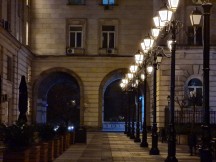

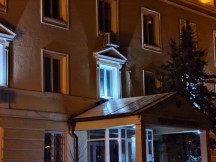
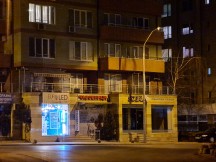
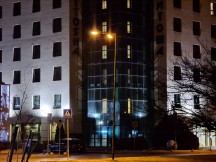
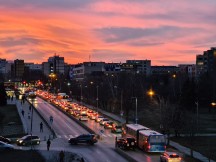
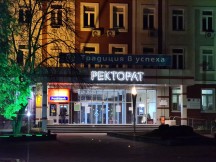
Low-light samples, telephoto camera (4x)
And Night mode makes these photos even better, usually. You stand to gain improved definition of light sources, punchier colors and a boost in shadows, for some minor sharpness loss.



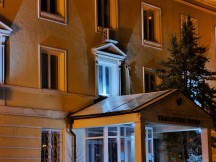
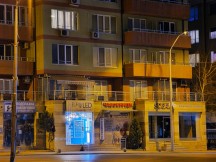
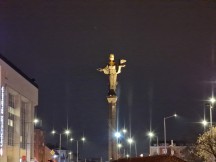
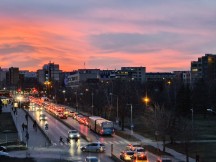

Low-light samples, telephoto camera (4x), Night mode
Here is how some of these scenes look zoomed in a little extra. Which mostly goes to illustrate that you shouldn't be too worried if you press the tree to go into 5x, instead of going through the extra hoop to select the 4x mode - 5x is okay, it's just not as sharp as 4x.
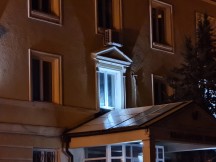
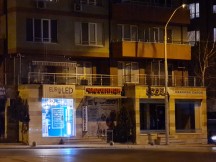
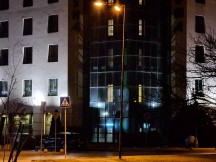
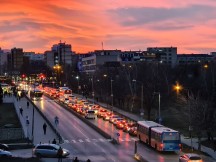

Low-light samples, telephoto camera (5x)
And now in Night mode.
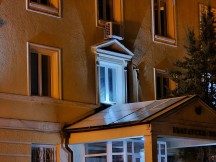
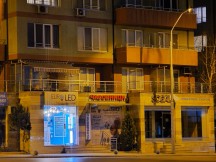
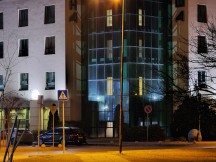
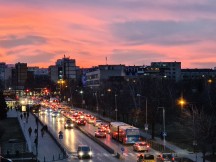

Low-light samples, telephoto camera (5x), Night mode
You may find our zooming approach a little backward, but here we are at 2x at the very end of this section. Not being a native zoom level, we anticipated it to be properly bad in low light, which it turned out wasn't necessarily the case.
We did observe a slight change in behavior compared to the daylight shots, in that in some scenes the telephoto wouldn't contribute at all, and even the center of the frame will come from the main camera, and not the telephoto (the second and fourth scene below).




Low-light samples, main-telephoto camera (2x)
An even more curious observation was that in these particular scenes Night mode made a significant difference. In contrast, in the scenes that were joint efforts between the two cams, we can barely tell the images apart. It's a game of light thresholds, where under certain conditions, the phone will do one thing and alter its processing under another set of circumstances. We can imagine it's a lot of work to align the outputs of two cameras in the first place, and taking multiple exposures for, say, 8 seconds in Night mode on top of that becomes too much.
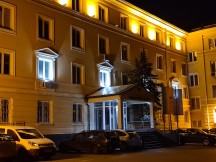

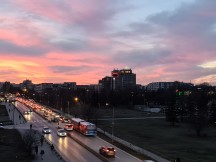
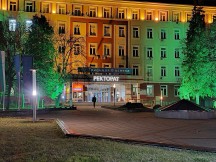
Low-light samples, main-telephoto camera (2x)
Once you're done with the real world samples, head over to our Photo compare tool to see how the Samsung Galaxy S20 Ultra 5G stacks up against the competition.



Samsung Galaxy S20 Ultra 5G against the iPhone 11 Pro Max and the Note10+ in our Photo compare tool
Reader comments
- Anonymous
- 14 Feb 2025
- XBF
Reduce the brightness up and down often times like to the lowest and to the highest levels of the screen often times. Just keep doing it for long time it will get to the accurate screen
- Anonymous
- 04 Feb 2025
- UFL
Real, my phone is the A8+ (2018) and its about, 6-7 years old. It still works pretty good but its obviously an old man now (charges slowly, heats up, can barely handle apps, the charger port is probably damaged) So i wanted this phone but better...
- Original-Jamaican
- 16 Nov 2024
- 4ra
I have a Samsung Galaxy S20 Ultra 5G SM-G988U1 and I always see shadows/grains/artifacts in dark areas of the screen especially when the brigthness is very low. It was purchased in September of this year (2024) labelled as a new model. Grains: ...